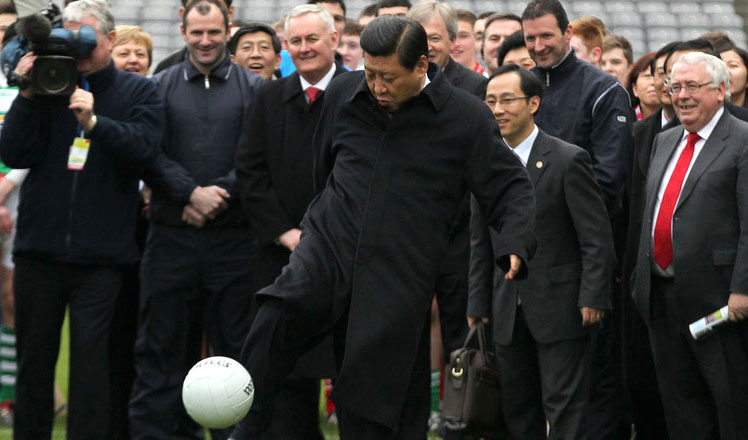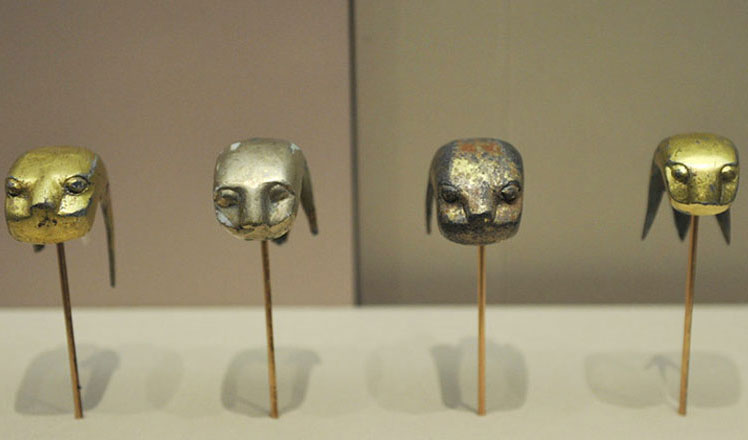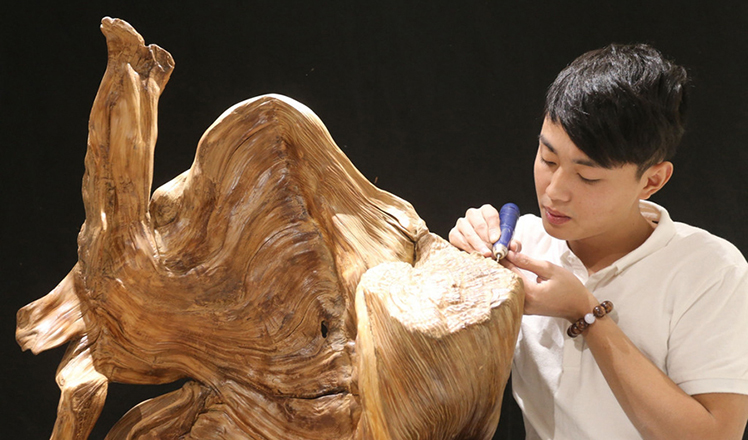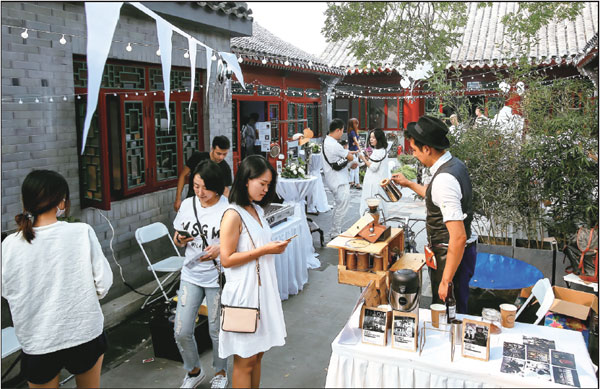Lack of originality sees creative markets stall
Updated: 2016-10-13 08:04
By China Daily(China Daily)
|
||||||||
|
Visitors stroll around a courtyard where the White Bazaar, a creative fair, was held last month during the annual Beijing Design Week, cosponsored by the Ministry of Culture and Beijing Municipal Government.Zhang Cheng / Xinhua |
Although they were established to promote individual designers and unique work, piracy and poor product diversity are undermining these outlets for independent craftspeople. China Daily reports.
Since their introduction 10 years ago, creative fairs have become a staple of China's arts and crafts retail scene by offering unique, home-produced goods, such as objets d'art and exotic foodstuffs produced by independent craftspeople. Now, though, their success is being threatened by the very thing they were set up to avoid - a lack of creativity - and poor legal awareness that has seen piracy of popular items become rife.
Many designers and organizers are concerned that the lack of diversity will undermine creativity and quality, as they have in more-traditional craft markets.
"There is a joke that says every Chinese city has a 'culture street' where 'creative' local souvenirs are sold. In fact, it doesn't matter where tourists buy these items, they all originate in the same place - the wholesale commodity markets in Yiwu, Zhejiang province (a city famous for cheap reproductions)," said Zhang Zheng, an associate professor at the school of journalism and communication at Tsinghua University in Beijing.
Creative fairs originated in the United Kingdom, and were introduced to China by City-Zine, a magazine in Guangzhou, Guangdong province, in 2006. The name of the market, which was devised as a side project for the magazine, is a pun on both "idea mart" and "I'm art" and is intended to emphasize creativity.
The idea caught on, resulting in similar fairs being established across the country, but that initial success is declining as an increasing number of replicas of a few popular items appear on market stalls nationwide.
Wang Wentao, founder of cn-imart, a classified ad website for creative markets, said the fairs have moved away from their original stance and are now a reflection of the infamous culture streets, offering the same limited range of items, such as notebooks, T-shirts and canvas bags, regardless of location.
Lack of regulation
According to Wang, a lack of regulation and oversight means it's difficult to establish whether a piece is an affectionate pastiche of an existing style or a straight copy that has been reproduced for sale.
"Almost every major city has famous creative fairs for locals, although some are known across a wider area. It's natural that both intentional and unconscious copying occurs - after all, a certain famous writer never apologized for plagiarism that was apparent to others - and issues are resolved by simply paying a fine, which is usually far less than the amount the counterfeiters made," he said.
The lack of originality and replication of popular items have seen the number of events organized by iMart, the oldest player in the field, shrink to one per month from its heyday, when it hosted about 10. In the past year, iMart's page on Douban, a major online channel for designers applying to participate in creative markets, has registered just one new post.
Meanwhile, Big Fish Market, a renowned organizer in Xi'an, the capital of the northwestern province of Shaanxi, has announced that it will hold its swansong later this month. A post on the company's social media account reads: "Because we can't stand the unchanging nature of things, we don't like being the same as other people. Right? This is also why you love us. We will bid farewell on Oct 22-23".

 Take a glimpse into soccer-related gifts of Xi
Take a glimpse into soccer-related gifts of Xi
 Precious relics of debauched king on display in Jiangxi
Precious relics of debauched king on display in Jiangxi
 In pics: Britain's Kate visits the Netherlands
In pics: Britain's Kate visits the Netherlands
 Qizai, rare brown giant panda in China
Qizai, rare brown giant panda in China
 Everything you always want to know about Macao
Everything you always want to know about Macao
 World's top 10 most valuable unicorn companies
World's top 10 most valuable unicorn companies
 Carver finds fame, money in wood sculptures
Carver finds fame, money in wood sculptures
 Missile destroyer to become local military-themed park
Missile destroyer to become local military-themed park
Most Viewed
Editor's Picks

|

|

|

|

|

|
Today's Top News
Trump outlines anti-terror plan, proposing extreme vetting for immigrants
Phelps puts spotlight on cupping
US launches airstrikes against IS targets in Libya's Sirte
Ministry slams US-Korean THAAD deployment
Two police officers shot at protest in Dallas
Abe's blame game reveals his policies failing to get results
Ending wildlife trafficking must be policy priority in Asia
Effects of supply-side reform take time to be seen
US Weekly

|

|








